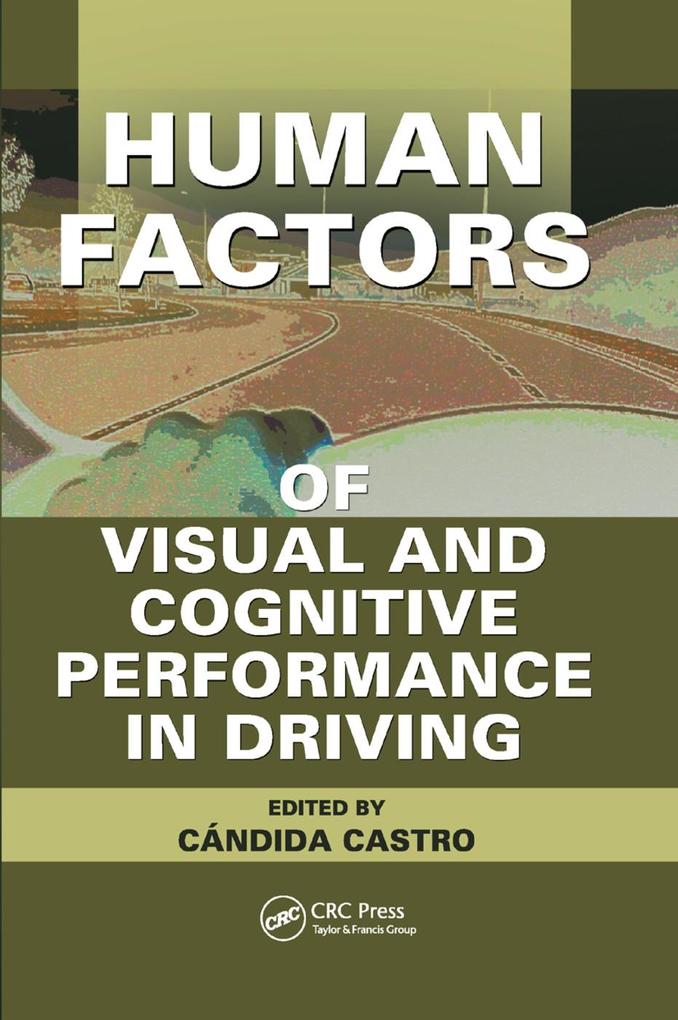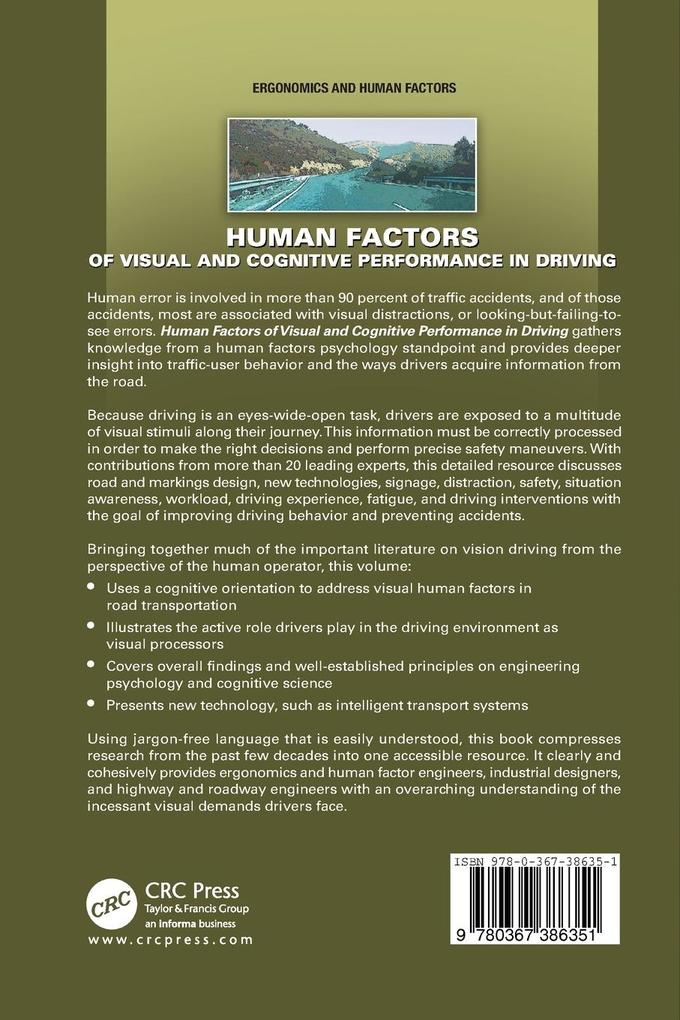
Zustellung: Mi, 16.07. - Sa, 19.07.
Versand in 5 Tagen
VersandkostenfreiBestellen & in Filiale abholen:
Written clearly and concisely and using jargon-free language, this book compresses research from the past few decades into an accessible resource. It focuses on the concrete cognitive processes of driving, specifically, information acquisition and information processing. The text delineates the theory, practice, and application of human factors knowledge and psychology to explain human errors that occur when acquiring information from the road environment. The book discusses highway engineering technologies, signage, VMS, and safety as well as situational awareness, workload, and fatigue.
Inhaltsverzeichnis
Visual Demands and Driving. Visual Requirements of Vehicular Guidance. Estimations in Driving. A Two-Dimensional Framework for Understanding the Role of Attentional Selection in Driving. Driver Distractions. Experience and Visual Attention in Driving. The Environment: Roadway Design, Environmental Factors, and Conflicts. On Allocating the Eyes: Visual Attention and In-Vehicle Technologies. Enhancing Safety by Augmenting Information Acquisition in the Driving Environment. Crossmodal Information Processing in Driving. Interventions to Reduce Road Trauma. On Not Getting Hit: The Science of Avoiding Collisions and the Failures Involved in That Endeavor.
Produktdetails
Erscheinungsdatum
19. September 2019
Sprache
englisch
Seitenanzahl
296
Autor/Autorin
Candida Castro
Verlag/Hersteller
Produktart
kartoniert
Gewicht
453 g
Größe (L/B/H)
234/156/16 mm
ISBN
9780367386351
Entdecken Sie mehr
Bewertungen
0 Bewertungen
Es wurden noch keine Bewertungen abgegeben. Schreiben Sie die erste Bewertung zu "Human Factors of Visual and Cognitive Performance in Driving" und helfen Sie damit anderen bei der Kaufentscheidung.










